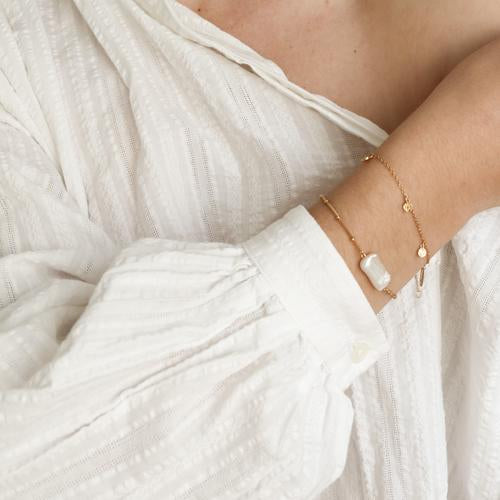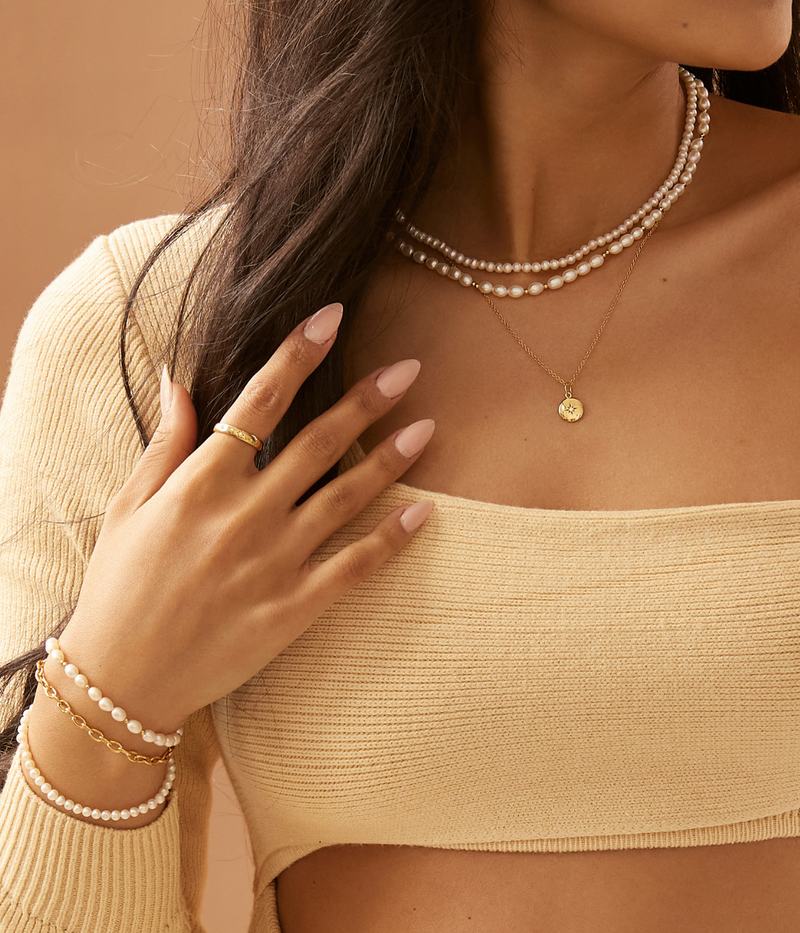
GOLD VERMEIL (Vermeil is a French word and is pronounced Ver-May)
Gold vermeil is much more affordable than solid gold but higher in quality than gold-plated pieces. To create vermeil, sterling silver is covered in a layer of gold that's at least 10 karats and 2.5 microns thick; a micron is 1/1000th of a millimetre. Most of our gold vermeil jewellery is coated in 18k gold and is 3 microns thick over sterling silver. It can be a more expensive method but it gives the best result for long-wearing quality jewellery. To the naked eye, vermeil looks very much like solid gold.
What does "18k vermeil" actually mean?
If you see "18k" or another karat before the word "vermeil", this simply refers to how much gold content there is in the jewellery piece i.e. 24k is 99.9% gold content, 18k is 75% gold content, 14k is 58.3%, 10k is 41.7% and 9k is 37.5%. Pure gold (24k) is very flexible and yellow in colour, so mixing it with other materials strengthens the gold, making it more suitable for use in jewellery.
GOLD PLATED
Gold-plated jewellery refers to jewellery that has gold plating at least 0.5 microns thick. It does not require sterling silver to be used as the base material, and usually uses a less valuable material as the base metal i.e. brass and copper combination. Gold plated jewellery is not as long wearing as gold vermeil and is better for more statement jewellery, it is not intended to be worn everyday.
GOLD FILLED
Gold-filled jewellery is jewellery composed of a solid layer of gold (typically constituting at least 5% of the item's total weight) mechanically bonded to a base of sterling silver or sometimes more of a base metal e.g. brass/copper. Gold filled jewellery is made by pressure bonding an actual layer of gold to sterling silver or brass/copper. Most high quality gold-filled pieces have the same appearance as high karat gold. There are however some design restrictions when working with gold filled jewellery.
WHAT IS E-COATING
E-coating, aka electro deposition or electro-coating, uses an electrical current to cover a metal surface with an organic lacquer. The technique effectively covers every part of the jewelry piece so that it’s left with an even and consistent coat. The e-coating process immerses the jewellery into coating materials such as pigments and resins that have been dispersed in water. An electrical current is then passed through the mix which causes the materials to adhere to the surface of the metal. After the metals are removed from the water solution, they are baked in an oven in order to make the coating hard and durable and then polished.


